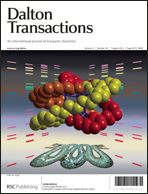In situ high temperature X-ray diffraction, nitrogen porosimetry and gas adsorption at room temperature were used to elucidate the effect of the degassing or activation temperature on the long-range and micropore textural properties of a series of coordination polymers with pillared-layer structures. Ramp-and-soak thermal gravimetric analysis performed at selected activation temperatures were used to verify the thermal stability of a CPL-n series [Cu2(pzdc)2L; pzdc = pyrazine-2,3-dicarboxylate; L = 4,4-azopyridine (apy) for CPL-4, 1,2-di-(4-pyridil)-ethylene (bpe) for CPL-5, N-(4-pyridyl)-isonicotinamide (pia) for CPL-6, and 1,2-di-(4-pyridyl)-glycol (dpyg) for CPL-7]. Although the activation temperatures were far below the decomposition point of the complexes, these resulted in significant and unique changes in micropore surface area and volume, even for CPL-4, -5 and -6, which contained pillar ligands with similar dimensions and similar structural long-range order. For the case of CPL-7, however, the framework appeared to be non-porous at any given activation temperature. Pure component equilibrium adsorption data gathered for CO2, CH4, and N2 were used to elucidate the CPL-n materials potential for storage and separations at room temperature. All of the materials exhibited considerable selectivity toward CO2, particularly at moderate pressures. Meanwhile, CO2 isosteric heats of adsorption indicated that the pore functionalities arising from the pillar ligands provided similar interactions with the adsorbate in the cases of CPL-4 and -5. For CPL-6, the presence of the carbonyl (C![[double bond, length as m-dash]](https://www.rsc.org/images/entities/char_e001.gif) O) group appeared to enhance interactions with CO2 at low loadings.
O) group appeared to enhance interactions with CO2 at low loadings.
![[double bond, length as m-dash]](https://www.rsc.org/images/entities/char_e001.gif) O) group appeared to enhance interactions with CO2 at low loadings.
O) group appeared to enhance interactions with CO2 at low loadings.![Graphical abstract: Systematic evaluation of textural properties, activation temperature and gas uptake of Cu2(pzdc)2L [L = dipyridyl-based ligands] porous coordination pillared-layer networks](/en/Image/Get?imageInfo.ImageType=GA&imageInfo.ImageIdentifier.ManuscriptID=C2DT30749A&imageInfo.ImageIdentifier.Year=2012)

 Please wait while we load your content...
Please wait while we load your content...